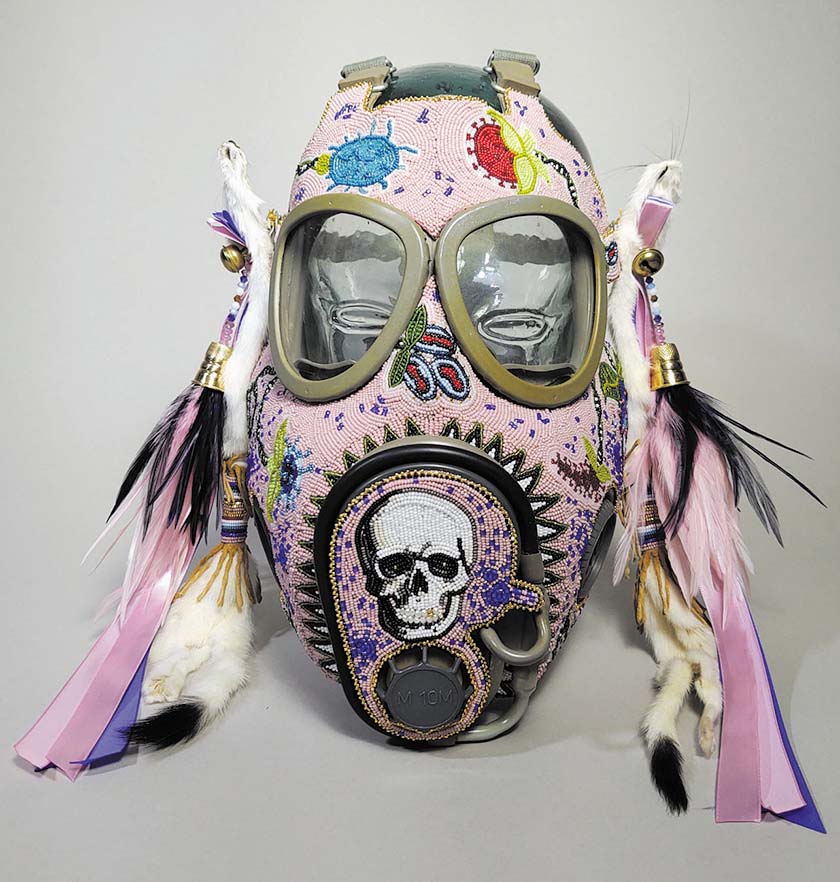
Dallin Maybee (Northern Arapaho)
Materials: Czech gas mask, 13/0 charlotte cut beads, 24k Gold charlotte beads, freshwater pearls, 11/0 beads, ermine skins, satin ribbons, brass bells and thimbles, Swarovski crystals, rooster hackles. Technique: Applique stitch beadwork
“[This] floral gas mask depicts one of the many contemporary issues of our modern lives. More than the devastating impact of these diseases upon our peoples, this art narrative is about our resilience and ability to find beauty in all things. I have always been extremely impressed in the beauty found in often simple, utilitarian items.
This horrifying juxtaposition of the vulgarity of why gas masks even exist, coupled with the bacteria and viruses that have afflicted us, are visibly laid bare against beautiful beadwork and floral designs of bacteria and cross-sections of viruses. DNA vines weave through a petri dish of growth, with no discernable identification of whose DNA is there. Our DNA appears the same and unfortunately we all wear this mask.”
By Micheal Rios, Tulalip News; photos courtesy Cherokee Nation
One of the largest Native American art shows in the nation is currently underway and 100% free to attend online. The 15th annual Cherokee Art Market is where 90 elite all-Native artists and artisans from across the United States – representing 50+ different tribes – come together to display and sell truly amazing jewelry, pottery, paintings, sculptures, and more. Digital visitors will be blown away by the culturally vibrant, hand-made treasures that can make your favorite household room more striking and holiday gift giving even more memorable.
“Art is a powerful reminder of past and present, of grand traditions and daily routines,” said Cherokee Nation Chief, Chuck Hoskin Jr. “Art adapts to adversity. It is a clear note of perseverance in the worst of times and a powerful reminder of that perseverance in the best of times. Many of our ancestors were once forbidden to tell stories in their Native language. Today you carry their voices, and I look around with a sense of wonder at just how far those voices go.”
Originally scheduled for a traditional, in-person market to be held in October, changes were necessary under current conditions in order to bring the market to fruition. Perseverance by both artists and art enthusiasts was called upon to bring a virtual platform together.
“The 2020 virtual art market created a new and unique opportunity for Cherokee Nation to introduce our market to a worldwide audience,” added Chief Hoskin. “We have a responsibility to keep artisans and patrons safe during the COVID-19 pandemic, so the shift to an online format was the best way to move forward. In this challenging environment, we were able to ensure the most talented Native artists were still able to show their work and find a receptive audience.”
Going virtual for the first time ever expands the possible audience and online engagement, especially for those who live great distances or simply hadn’t been aware that such a market even exists until now. The Cherokee Art Market is currently ‘live’ and is scheduled to end the morning of December 21. It can be reached at visitcherokeenation.com/cherokee-art-market/art-gallery
“This year has been tremendously difficult for artists, with many shows being forced to cancel, so we offered the virtual platform at no cost to help them to show and sell their work safely,” said Deborah Fritts, Cherokee Art Market coordinator. “Not only does their dedication and creativity promote Native culture, it enhances timely and relevant conversations about our past, present and future. We look forward to celebrating their work and hope the public will take time to visit us online.”
Those individuals seeking authentic Native art, created by a wide range of tribal representatives, are encouraged to visit this unique digital marketplace. Even without making a purchase, visitors will be immersed in a bounty of traditional treasure that truly celebrates the diversity of tribal cultures and creativity.
Visit the all virtual Cherokee Art Market now through December 21 at visitcherokeenation.com/cherokee-art-market
Here are a few unique items that highlight the market’s broad range of elite Native artists and their stunning craftsmanship.

Renee Hoover (Cherokee Nation)
Materials: Commercial Reed and Dyes. Technique: Cherokee Double Walled – Round Reed
“I have woven four story baskets that each contain a clear message; this fifth story basket is designed to be open ended and used by an adult and child to create stories unique to them and their setting. I have woven several turtles within the basket that can become a part of any child’s story. The large turtle on the lid could naturally become a parent/adult with the smaller turtles within the basket and used for whatever roles suit the story. It’s so important for families to create their own stories and this basket could become a starting point.”
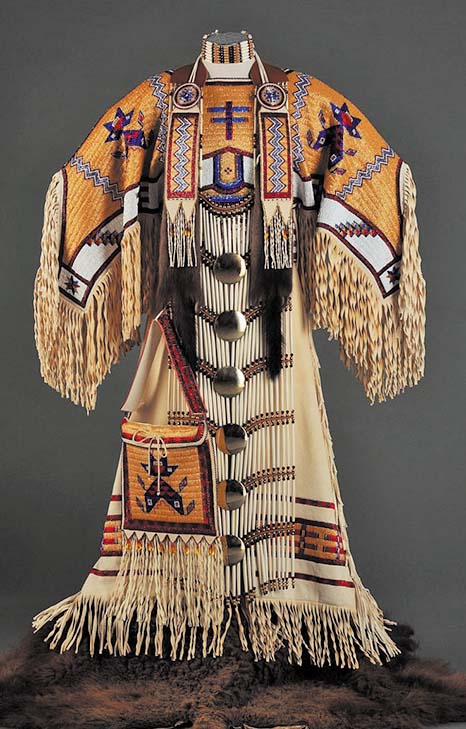
Beverly Moran (Standing Rock)
Materials: Size 11 Czech Glass Seed Beads, Size 3mm, 6mm, and 8mm Burgundy Swarovski Crystals, Gold plated 6mm & 8mm beads, 1 1/2 inch & 4 inch bone hair pipes, sable minks, brain tanned deer & elk hides, sterling silver findings, canvas and cow hide.
Technique: The beaded technique includes both the lane/lazy stitch and applique stitch. All components of the dress are completely handstitched. The dress took over 2 years to complete.
“Seen By Her Nation is a unique and one-of-a-kind fully beaded Lakota Woman’s dress inspired by my daughter Andrea Bear King and titled in honor of a wife of our Lakota leader Sitting Bull. This dress is designed and created with the Woman’s Northern Traditional dancer in mind, but is a very beautiful piece of collectable art. Bold motifs of dragonflies, lightning bolts, tipis, turtles, and stars all of which are symbolic of the history and culture of my Lakota relatives are incorporated into this dress. The dress includes a fully beaded yoke, beaded skirt, belt, purse, beaded mink hair ties, strike-a-light bag, knife sheath, a bone choker and woman’s full size breastplate.”
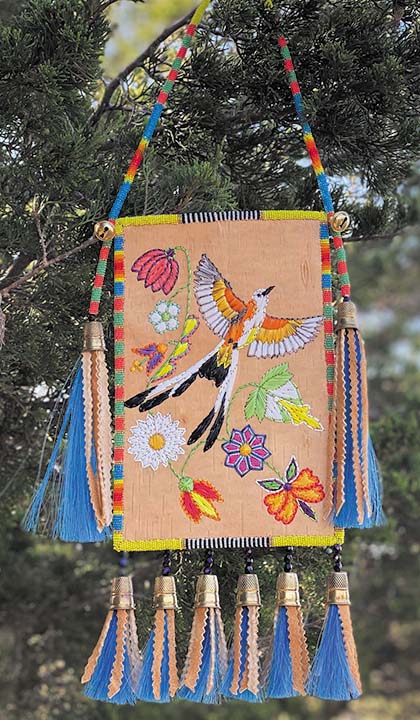
Monica Raphael (Grand Traverse)
Materials: Birch bark, natural and dyed porcupine quills using various plants, insects and commercial dyes. Vintage, antique and 24k gold size 13 Czech seed beads, antique brass thimbles and hawk bells, size 4mm black fire polished antique glass beads, dyed horse hair and traditionally brain tanned and smoked deer hide.
Technique: Woodland Porcupine Quillwork using natural and dyed quills embroidery on to birch bark.
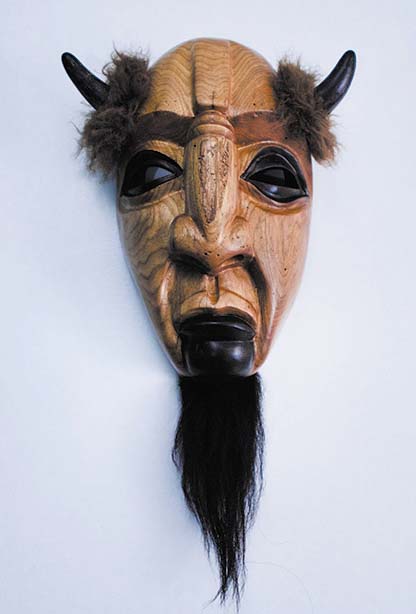
Joshua Adams (Easter Band of Cherokee Indians)
Materials: Butternut Wood, Buffalo horn and Fur
Technique: Woodcarving
“My interpretation of the lead dance mask for the Cherokee buffalo dance or forest buffalo dance. The dance is reserved for mornings and nights before hunts. The Buffalo dance was not restrictive or private and was open for all to participate publicly. Despite the disappearance of the forest buffalo from the smokies centuries ago, the dance, like the Cherokee, has persisted through time.”
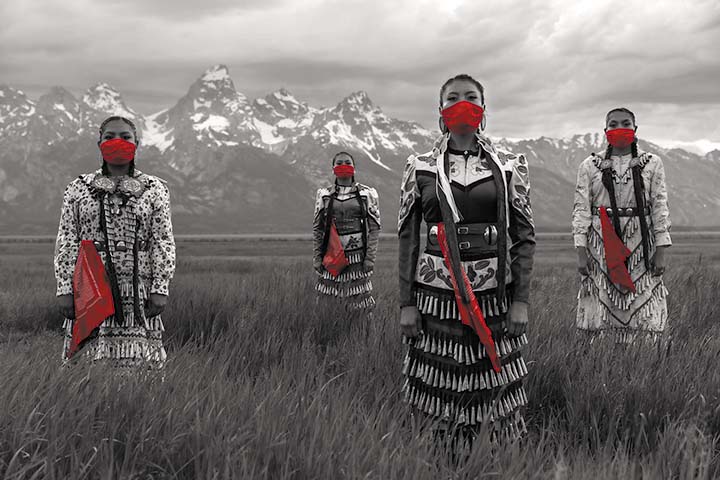
Eugene Tapahe (Navajo)
Location: Grand Tetons National Park, Wyoming
Materials: Archival Watercolor Paper
Technique: Lithograph Photograph Print
“Art heals. The Jingle Dress Project is my dream to take the healing power of the Ojibwe jingle dress and dance to the land, to travel and capture a series of images to document the spiritual places where our ancestors once walked. My goal is to unite and give hope to the world through art, dance and culture to help us heal during the COVID-19 pandemic and these uncertain times.”
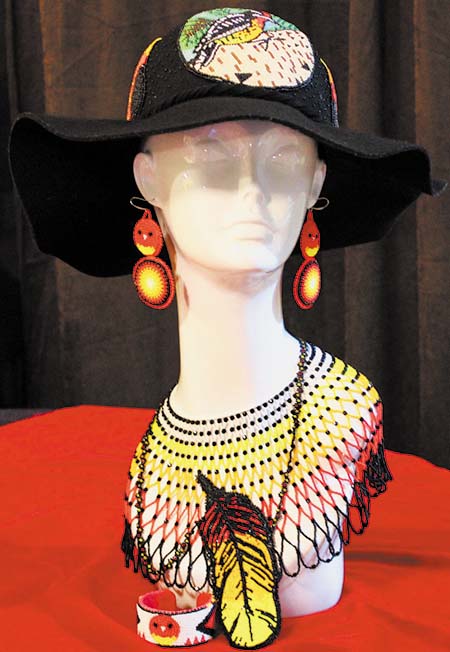
Deana Ward (Choctaw Nation)
Materials: Cut Glass Beads, Sterling Silver Findings, Brain-tanned Buckskin
Technique: Picot, daisy, whipped, embroidery, bead weaving, right angle weave stitching
“The Biskinik is a sacred bird to the Choctaws. The English name is the yellow-bellied sapsucker. Our tribal newspaper is named after this bird because it is a bringer of ‘good news’.”
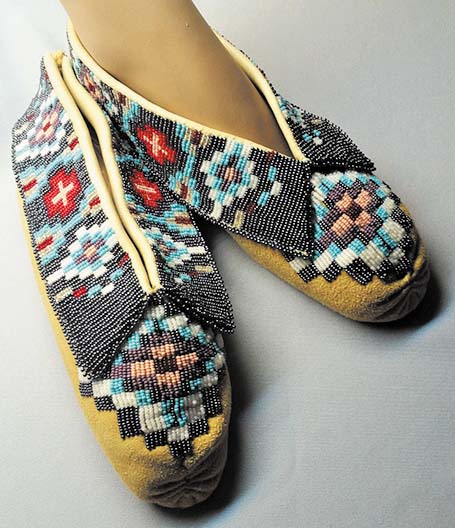
Yonavea Hawkins (Caddo)
Materials: Buckskin, size 11 cut beads, thread, and sinew
Technique: Half -stitch (similar to an overlay stitch)
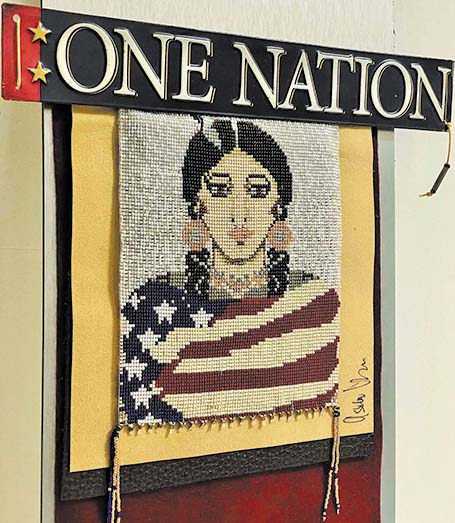
Ashley Roberts Kahsaklawee (Cherokee Nation)
Materials: Glass beads, leather, wool, vintage sign
Technique: Loom beadwork tapestry warps sewn and leather along top ridge sewn to wool and attached to vintage sign. Leather backing. Loom piece is free from tack down and can be viewed from front and back.